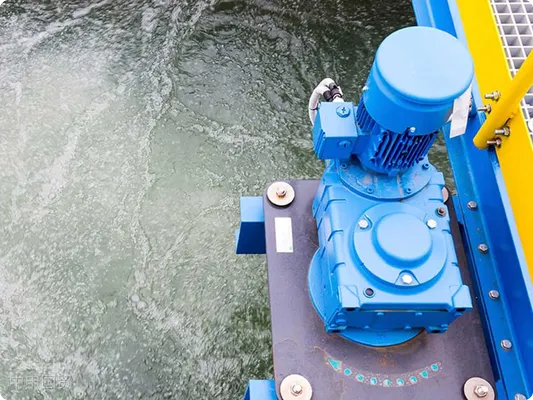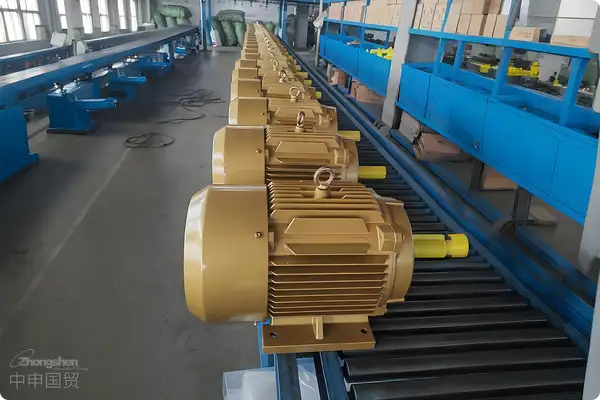- Shanghai Zhongshen International Trade Co., Ltd. - Two decades of trade agency expertise.
- Service Hotline: 139 1787 2118
With increasing global environmental awareness, the international market demand for wastewater treatment equipment is gradually expanding. Such equipment must ensure compliance with target countries relevant regulations and technical standards during export. This article will detailEquipment Exportthe specific processes and requirements for wastewater treatment, providing enterprises with professional guidance and effective support.

I. Wastewater Treatment Equipment Export Process
Understand target market regulations and standards
Enterprises must thoroughly understand target countries relevant regulations and technical standards before export, including:
- CE Certification: Ensure products meet EU safety, health, and environmental standards for smooth entry into the EU market.
- EPA standardsForfor containers exported to the USThe sewage treatment equipment must comply with the pollution control standards of the U.S. Environmental Protection Agency (EPA).
- ISO 14001 CertificationIndicates that the companys production environment and management system meet international environmental management standards.
- Other regional standardsDifferent countries and regions may have special requirements, such as Japans JIS standards and Australias AS/NZS standards. Companies need to conduct preliminary research and comply with relevant standards.
Confirm product qualifications and certification documents
Exported sewage treatment equipment must meet international quality standards and provide relevant certification documents, including:
- GMP (Good Manufacturing Practice) quality management standardsEnsures stable production process quality and compliance with international production standards.
- ISO 9001 Quality Management System CertificateIndicates that the companys production process has a comprehensive quality control system.
- Raw material procurement certificatesEnsures the compliance of core components sources and meets the requirements of the target market.
3. Export Clearance
Companies need to prepare complete export customs clearance documents, including:
- Commercial InvoiceLists detailed information such as product name, specifications, quantity, and price.
- Packing listProvides detailed information on packing contents, dimensions, and weight.
- It is recommended to verify through the following methods:CertificateCertifies the products origin to enjoy corresponding tariff preferences.
- Quality inspection reportsEnsures the product meets export requirements and provides third-party inspection reports.
During customs clearance, companies must cooperate with customs inspections to ensure the cargo information matches the customs documents. After customs approval, the goods can be released.
Logistics transportation
Based on the characteristics of sewage treatment equipment, choose the appropriate transportation method:
- Maritime TransportationSuitable for large-volume and bulky equipment transportation with lower costs.
- Air TransportationSuitable for small-batch equipment with high timeliness requirements.
- Land transport or multimodal transportSuitable for cross-border transportation to neighboring countries.
Special attention must be paid to the packaging of the equipment during transportation to ensure shockproof, moisture-proof, and impact-resistant measures, avoiding damage during long-distance transport.
Product Testing and Quality Control
In the target country, the importer or agent must complete customs clearance procedures and provide the following documents:
- Commercial Invoice,Packing list,B/L,Quality Certificateetc.
- Provide relevant compliance certificates according to the target market requirements.
After customs clearance is completed, the goods can be delivered to the customers designated location.
II. Wastewater Treatment Equipment Export Requirements
Quality and compliance standards
- International standard complianceEnsures the product meets the quality standards of the target market, such as EU CE standards, U.S. EPA standards, ISO series certifications, etc.
- Core component qualityFocuses on the core components of the equipment, such as pumps, filtration systems, and control systems, to ensure stable performance and durability.
- Test ReportsTest reports issued by authoritative third-party institutions must be provided to prove that the equipment meets all standard requirements.
- Energy efficiency standardsThe equipment must comply with the energy efficiency requirements of the target market, reduce energy consumption, and meet environmental standards.
Packaging and labeling requirements
- Packaging designDesign appropriate packaging solutions based on equipment characteristics, using shockproof, moisture-proof, and anti-collision materials to ensure transportation safety.
- Label contentLabels must include equipment name, model, origin, technical parameters, usage precautions, and operation instructions.
- Language RequirementsAccording to target market requirements, labels must be provided in both English and the local official language, such as Thai or German.
- Packaging MethodsComply with the target markets safety marks and certification labels, such as CE marking and FCC labels.
Transportation and storage requirements
- Transportation conditionsEnsure the equipment remains in good condition during transportation, with temperature control and special protection if necessary.
- Storage conditionsAfter arrival at the destination, the equipment must be stored as required to avoid exposure to sunlight, high temperatures, or humidity that may affect performance.
III. Precautions
Ensure documentation accuracy
All export documents must be accurate, including commercial invoices, packing lists, and certificates of origin. Any errors may cause customs delays or even return shipments.
Comply with target market regulations
Enterprises must stay updated on changes in the target markets laws and regulations to ensure products meet the latest technical requirements and standards, especially for environmental and energy efficiency.
Plan transportation solutions effectively
Choose reliable logistics providers and plan transportation in advance to ensure timely and safe delivery. For large equipment, detailed loading and unloading plans must be designed.
ProfessionalExport RepresentationSupport
By utilizing the services of professional export agencies, enterprises can simplify processes, reduce cumbersome document preparation and declarations, improve customs clearance efficiency, and lower export risks.
- Agency advantagesProvide comprehensive services including market research, document preparation, certification applications, and logistics.
- Compliance guaranteeEnsure products and processes comply with international standards, reducing trade disputes.
IV. Summary
Exporting wastewater treatment equipment involves complex processes and strict compliance requirements. Enterprises must plan ahead to ensure product quality meets international standards and documents are accurate. Utilizing professional export agencies can significantly improve efficiency, reduce trade risks, and facilitate international market expansion. This article aims to provide practical references and guidance to support smooth business operations.
Related Recommendations
Category case
Contact Us
Email: service@sh-zhongshen.com
Related Recommendations
Contact via WeChat

? 2025. All Rights Reserved. Shanghai ICP No. 2023007705-2  PSB Record: Shanghai No.31011502009912
PSB Record: Shanghai No.31011502009912








